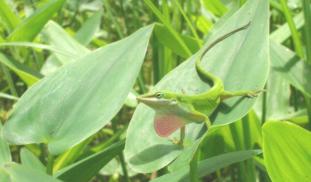Please wait...
About This Project
An animal's ability to adapt to short- and long-term changes in temperature is crucial for its survival. Lizards are ectotherms that rely on their environment to regulate body temperature, so they experience a wide range of temperatures. We don't yet know how lizard cells remain viable across extreme temperatures, especially within the brain. We are studying the regulation of brain lipids (i.e., fats) in biological membranes to understand how lizards adapt to and live in extreme environments.

Browse Other Projects on Experiment
Related Projects
CADASIL in a dish: Creating a petri dish model to find a cure for early-onset vascular dementia
CADASIL (Cerebral Autosomal Dominant Arteriopathy with Subcortical Infarcts and Leukoencephalopathy) is...
Can we decipher vocalizations of parrots in a complex social network?
Parrots can "talk" like humans. However, whether their complex vocalizations follow syntactic rules and...
What can cephalopods teach us about spatial memory and learning?
Cephalopods and vertebrates have gone through similar circumstances that required adaptations such as learning...


